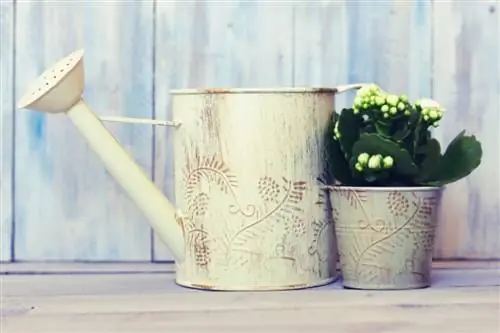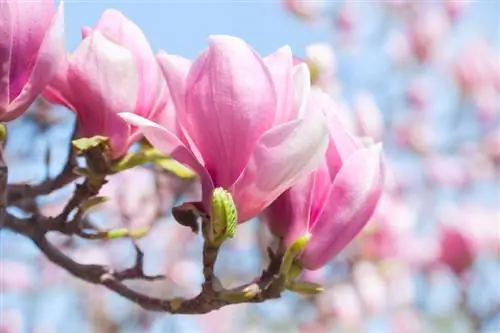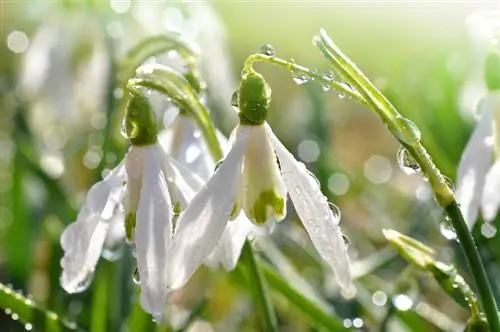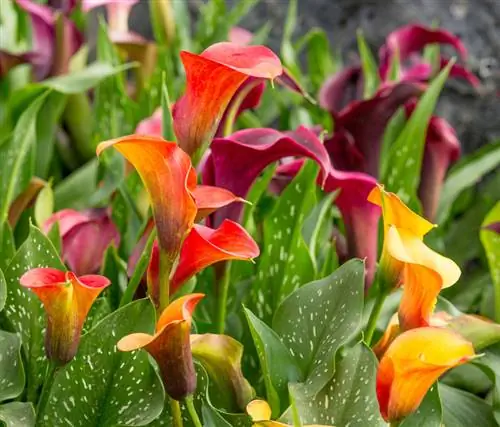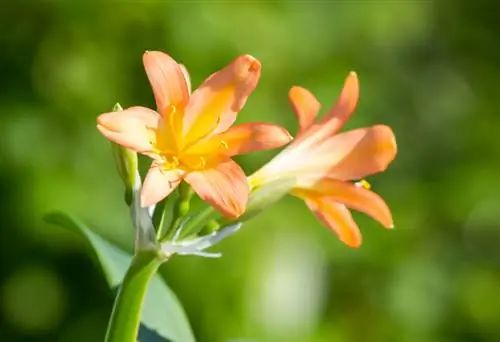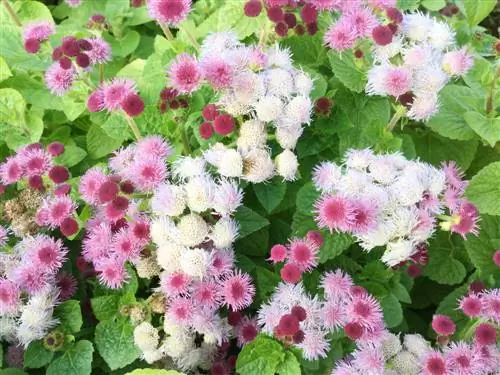- Author admin [email protected].
- Public 2023-12-16 16:46.
- Last modified 2025-01-23 11:21.
The Kalanchoe, originally native to Madagascar and tropical parts of Asia and Africa, is one of the most popular houseplants. The relatively easy-care succulent shows its bright flowers exactly when many plants are hibernating. Other varieties in the large plant family are cultivated solely for their exceptional leaves. If you pay attention to a few basic things when caring for it, the Kalanchoe is guaranteed to produce new buds every year and impress with weeks of flowers.
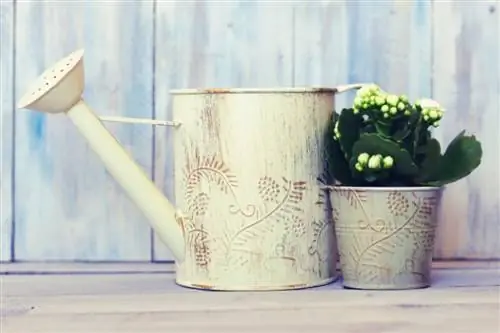
How do I care for my Kalanchoe properly?
For successful Kalanchoe care: Water weekly when substrate is dry; avoid waterlogging; repot annually or fertilize with cactus fertilizer if the substrate is older; tolerate dry indoor air; no regular pruning necessary; Observe winter rest.
How to water?
The Kalanchoe stores water in its thick, fleshy leaves. This enables the plant to survive even in dry places where almost nothing else grows. This makes watering quite easy, as it is usually enough to water once a week.
You only water when the substrate feels dry even at a depth of a few centimeters. Rainwater or soft water are ideal, but the plants also do well with tap water that is not too hard. However, the Kalanchoe absolutely cannot tolerate waterlogging, so pour away any excess liquid in the saucer after a few minutes.
How to fertilize?
Plants grown in pots only have a very limited supply of nutrients and therefore need to be fertilized regularly. Succulents, on the other hand, are very frugal, so the nutrient supply is a little different than with many houseplants:
- Repotted annually, no need to fertilize at all.
- If you repot less often, fertilizer will only be necessary in the second year.
- Then fertilize once a month with a commercially available cactus fertilizer (€6.00 on Amazon).
Humidity
Unlike many other houseplants that thrive in tropical regions such as Madagascar, the Kalanchoe copes well with dry indoor air. Regular spraying of the leaves is also not necessary.
When and how to repot
If you want to save yourself fertilizing, simply repot every year. Otherwise, it is always repotted when the planter has become too small. The best time for this care measure is early spring, before the plant produces its first flowers.
As in its natural home of Madagascar, the soil should be well-drained. A mixture of: is therefore ideal
- 50 percent cactus soil
- 50 percent perlite, expanded clay or quartz sand.
The pot must have good drainage, which you cover with a piece of pottery. Then fill in a drainage layer of coarse gravel or expanded clay.
Newly purchased Kalanchoes are often placed in conventional potting soil with at most a little Styrofoam mixed in to loosen it up. Replace this substrate as soon as possible with a soil more suitable for succulents.
When and how to cut?
As long as the shoots don't grow too sprawling, you don't need to cut back the Kalanchoe. Only the dead leaves and withered flowers should be removed regularly. Always use a very clean, sharp knife. This avoids bruising on the fleshy stems and reduces the risk of pathogens penetrating.
Diseases
Despite this plant being so robust, care errors and an unfavorable indoor climate can result in plant diseases.
Root rot
Root rot occurs quite often due to waterlogging. The first sign that you have meant too well with your watering is rapid growth of the shoots, but the leaves themselves remain very small. Putrefactive bacteria spread in the waterlogged soil and damage the roots. These can no longer transport water and the plant dries up.
Repot the plant, removing any damaged root parts. Water significantly less in the future. In many cases the Kalanchoe recovers well from the damage.
Mildew
Houseplants can also be affected by this fungal disease. Hot summer days, open windows and dryness encourage it. There is a flour-like, grayish-white coating on the leaves of the Kalanchoe. Remove infected shoots immediately and dispose of them with household waste. Spraying is only necessary in exceptional cases.
Which pests are threatening?
While some species seem to be virtually immune to pest infestation, other Kalanchoes are quite susceptible to infestation with aphids, mealybugs or mealybugs. Black weevils or thrips also like to settle on some varieties. If you discover the little pests, the Kalanchoe must be placed individually and treated with a suitable spray.
Important for flower formation: winter rest
During the winter months, you should keep most Kalanchoe varieties much cooler than in the summer months. A temperature between 8 and 13 degrees is ideal.
An exception is the Flaming Cat (Kalanchoe blossfeldiania). This species is maintained all year round at room temperatures. However, in order for it to bloom magnificently, this Kalanchoe must only be exposed to light for around eight to nine hours for around two months.
Tip
If the room in which the Flaming Käthchen is located is artificially lit, the plant often does not produce any flowers. In this case, simply cover the little flowering miracle with a cardboard box in the evening hours.

